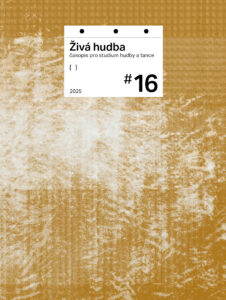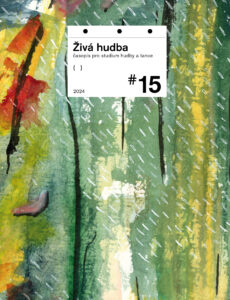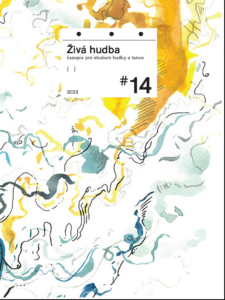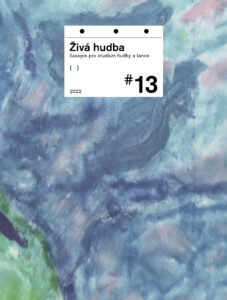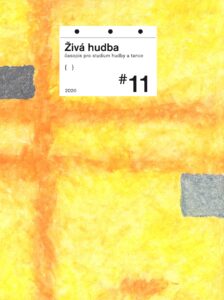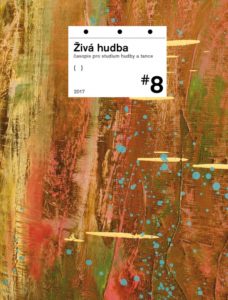Abstrakt Karel Janeček’s Základy moderní harmonie (1965), while mostly unknown outside of Czech-speaking theoretical circles, addresses a variety of topics relevant to current theoretical discussions of twentieth century music, including but not limited to, chord quality, harmonic function, and prolongation. Besides remaining yet untranslated, the text provides challenges in complexity, idiosyncrasy, and scope. This study translates selected excerpts from Základy moderní harmonie to explain Janeček’s theory of chord quality taxonomy and then interprets it in traditional set theoretical language after theorists like Allen Forte, Robert Morris, and John Rahn. Two findings arise from my interpretation of Janeček’s taxonomy. The first is historical: Janeček’s approach is one of the earliest predecessors to the set-theoretical method initiated by Allen Forte. The second is theoretical with analytical implications: Janeček recognizes that different intervals have variable affective influence on chord quality. I also discuss Janeček’s implicit engagement with other contemporary theorists like Alois Hába, Hindemith, and Arnold Schoenberg.


Karel Lill:
A Chord Quality Taxonomy from Karel Janeček´s Základy moderní harmonie (Foundations of Modern Harmony, 1965) and an American set-theoretical interpretation
Stati a studie / Živá hudba 2018/9 / Publikováno 29. 4. 2019
Abstrakt:
Karel Janeček’s Základy moderní harmonie (1965), while mostly unknown outside of Czech-speaking theoretical circles, addresses a variety of topics relevant to current theoretical discussions of twentieth century music, including but not limited to, chord quality, harmonic function, and prolongation. Besides remaining yet untranslated, the text provides challenges in complexity, idiosyncrasy, and scope. This study translates selected excerpts from Základy moderní harmonie to explain Janeček’s theory of chord quality taxonomy and then interprets it in traditional set theoretical language after theorists like Allen Forte, Robert Morris, and John Rahn. Two findings arise from my interpretation of Janeček’s taxonomy. The first is historical: Janeček’s approach is one of the earliest predecessors to the set-theoretical method initiated by Allen Forte. The second is theoretical with analytical implications: Janeček recognizes that different intervals have variable affective influence on chord quality. I also discuss Janeček’s implicit engagement with other contemporary theorists like Alois Hába, Hindemith, and Arnold Schoenberg.
Citace:
Karel Lill. A Chord Quality Taxonomy from Karel Janeček´s Základy moderní harmonie (Foundations of Modern Harmony, 1965) and an American set-theoretical interpretation. Živá hudba 2018/9. On-line <https://ziva-hudba.info/a-chord-quality-taxonomy-from-karel-janeceks-zaklady-moderni-harmonie-foundations-of-modern-harmony-1965-and-an-american-set-theoretical-interpretation/> [02. 1. 2026].
Kopírovat
Vyšlo v časopise
Živá hudba 2018/9
Rubrika: Stati a studie
Publikováno: 29. 4. 2019
PDF: download
Klíčová slova:
analýza, chord quality, Czech music theory, history of theory, Janeček, set-theory, teorie
Články autora:
Karel Lill (1)
Aktuální čísla časopisu můžete koupit v Nakladatelství AMU.
Citace:
Karel Lill. A Chord Quality Taxonomy from Karel Janeček´s Základy moderní harmonie (Foundations of Modern Harmony, 1965) and an American set-theoretical interpretation. Živá hudba 2018/9. On-line <https://ziva-hudba.info/a-chord-quality-taxonomy-from-karel-janeceks-zaklady-moderni-harmonie-foundations-of-modern-harmony-1965-and-an-american-set-theoretical-interpretation/> [02. 1. 2026].
Kopírovat
Další články
-
Tatiana Škapcová:
Peter Kusý: Interpersonálna teória hudby. Teoretické východiská, výskumné…
Recenze | 2019/10 -
Karel Lill:
Taxonomie kvalit akordů ze Základů moderní harmonie Karla Janečka (1965) a její…
Stati a studie | 2018/9 -
Daniela Machová:
Tanec jako kulturní kapitál
Stati a studie | 2020/11 -
Daniela Machová, Dorota Gremlicová, Lucie Hayashi:
Tanec v ekonomických kontextech: teoretická východiska a praktické souvislosti
Stati a studie | 2020/11 -
Monika Štúrová:
Cesta badatele za informacemi aneb pohled na regionální archivy v dnešní době
Stati a studie | 2020/11 -
Richard Cohn:
Uvedení do neoriemannovské teorie: přehled a historický kontext
Materiály | 2019/10 -
Lucie Hayashi:
První hybridní sympozium mezinárodní Etnochoreologické skupiny při ICTM si vzalo na…
Zprávy | 2021/12 -
Jaromír Havlík:
Na okraj Sinfonie Luciana Beria. Několik analytických poznámek
Stati a studie | 2019/10



